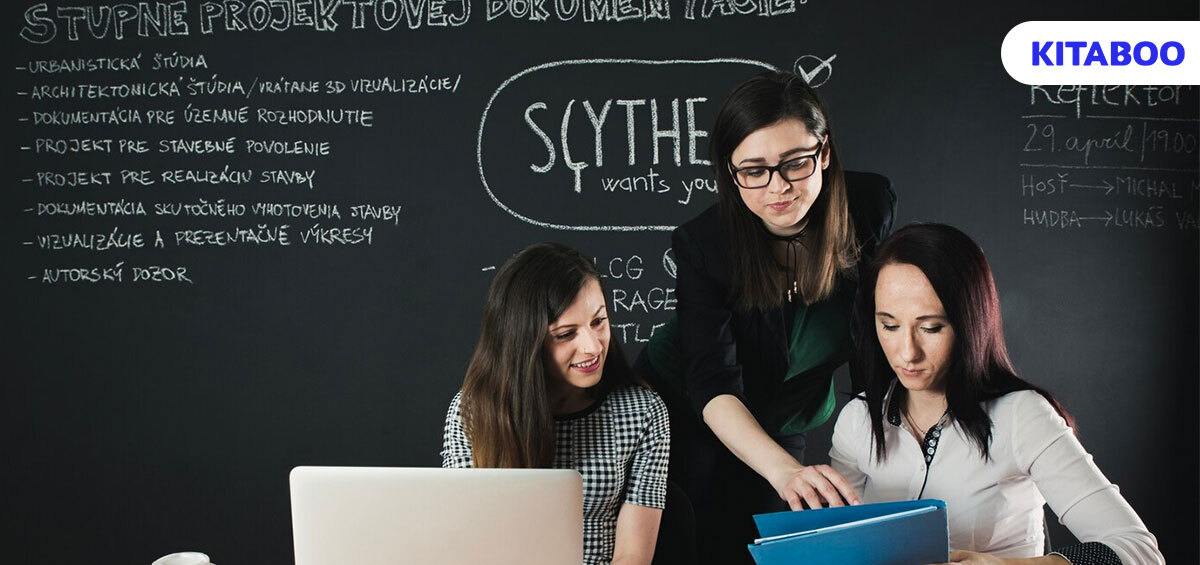As education evolved, a gradual shift occurred from school-centered and teacher-centered to student-centered learning. More effective pedagogical methods were adopted as researchers learned more about learning patterns, results, and human psychology.
Compared to a conventional classroom setting, student-centered learning broke away from a curriculum meant for all, where a large group of students were taught together, not catering to individual students. This gives students more control and autonomy, focusing on their needs and learning objectives.
Digital transformation played a significant role in furthering student-centered learning where kids loved each other. Digital textbook platforms like KITABOO supported this learning approach by providing cutting-edge learning solutions, allowing progress tracking and personalization.
Table of Contents
I. What is Student-Centered Learning?
II. How Student-Centered Learning Can Catalyze Educational Reform?
- Increases the Future-Preparedness of Students
- Facilitates Self-Directed, Self-Paced, Autonomous Learning
- Paves the Way for Personalized Learning and Instruction
- Allows for Lifelong Learning
- Addresses Complex Success Gaps
- Increases Academic Interest and Engagement
- Allows for Proficiency-Based Learning
What is Student-Centered Learning?
Student-centered learning refers to many educational approaches, instructional methods, and academic programs that take students’ interests, preferences, aptitudes, goals, and cultural backgrounds during pedagogy. Educators collaborate with the students at the center to understand the best approach to get the desired results.
Student-centered learning is a term that could also be used for a specific philosophy in pedagogy that puts the needs of the student first, tailoring the instructional materials to them. Students may also be taught in smaller heterogeneous groupings with differentiated instruction.
There are four characteristics of this learning approach:
- Voice
- Choice
- Competency-based progression
- Continuous monitoring of student needs
How Student-Centered Learning Can Catalyze Educational Reform?
In student-centered learning, learners:
- Indulge in active participation
- Decide their own learning pace and time
- Experience complete autonomy
- Set their learning objectives
- Undergo self-assessment to monitor progress
- Work in collaboration with the educators and other students, etc
There are many essential ways student-centered learning has been transforming the education landscape. These ways are:
1. Increases the Future-Preparedness of Students
Unlike conventional learning, student-centered learning prepares students for real-world scenarios while pursuing an education.
By providing practical-oriented learning modalities and problem-solving opportunities unique to the students, they can apply the knowledge acquired to everyday problems.
2. Facilitates Self-Directed, Self-Paced, Autonomous Learning
Student-centered learning puts the student in charge of their academic trajectory, making the learning path self-directed. This means they are not dependent on an institution or educator and start building responsibility early on.
As this caters to each student’s distinct needs, it also allows for self-paced learning where students can progress according to their preferences and at a time when they prefer to do so, from anywhere. Students can also be architects of their curriculum, changing the role of teachers to facilitators and mentors.
3. Paves the Way for Personalized Learning and Instruction
This learning approach is tailored to a student or a group of students and their preferences. For example, if a student needs to progress in learning a language but is proficient in mathematics, more time can be given to the former.
By integrating technologies like machine learning and AI, personalized learning has become more robust, tailoring instruction at the nano-level. It is also accessible and takes into account the cultural background of students.
4. Allows for Lifelong Learning
Lifelong learning is quickly becoming the need of the hour, with new technologies becoming a part of our lives. A student-centric learning approach extends beyond conventional settings and continues to create learning experiences for students of all ages and walks of life.
It supports continuous skill development at any level, resulting in an upskilled, trained, and adaptive workforce. It also instills an affinity for lifelong learning.
5. Addresses Complex Success Gaps
Achievement or success disparities often occur in education when two students are taught the same thing simultaneously.
With student-centered learning, additional support can be provided to those who need it by highlighting focus areas and allowing for equal academic achievement and opportunities.
6. Increases Academic Interest and Engagement
Because student-centric learning is personalized, it automatically piques student interest and engagement.
It also involves students actively participating through scenario-based learning, workshops, exercises, assessments, gamified learning, etc., improving the learning outcomes.
7. Allows for Proficiency-Based Learning
Unlike conventional institutions where progress is based on the amount of time spent in a grade, proficiency-based student-centered learning can allow students to progress based on their skills and advancement.
This also speeds up progress, opening up new opportunities to create challenging environments for students to strengthen their cognitive abilities in sync with their skills.
Student-Centered Learning in Practice
Various educational institutions have adopted student-centered learning. Here are a few:
- High Tech High, California: The school development organization is a growing charter school network focusing on project-based, community-based, and personalized learning. The students are free to choose and pursue their passions, enabled by the tools and technology offered by this school network.
Westminster Public Schools, Colorado: The school has a highly mobile and at-risk student population. With a mantra that says, “Education is personal,” the school has a competency-based education system. Students have learning targets, and to move to the next, they have to master the level they are at. This way, each student can move at their own pace.
The Future of Student-Centered Learning
With student-centered learning showing remarkable learning outcomes, it is set to be fortified in the future. Augmented and virtual reality could create even more immersive experiences and bring subjects to life. It could also include global collaboration to increase exposure in the near future.
We could see the education system transform from curriculum-based to skill-based, offering flexible learning environments for all. Experiential and lifelong learning are also trends that could etch their marks for student-centered learning.
Pave the way for educational reform with student-centered learning through KITABOO‘s end-to-end digital publishing solutions. Create, edit, publish, and distribute digital textbooks that are innovative, interactive, and intuitive, designed thoughtfully by industry experts.
To know more, write to us at KITABOO@hurix.com.
Suggested Reads:
Discover How An Ebook Conversion, Publishing & Distribution Platform Can Help You
Kitaboo is a cloud-based content platform to create-publish & securely distribute interactive mobile-ready ebooks.
You May Also Like
-
Interactive eBooks: The Future of Digital Reading!
Blog,Digital Publishing,eBook solution / February 29, 2024








